Rethinking saddle fit and shoulder blade movement
We are no longer building saddle trees, but we have two videos about how Western saddles fit horses available on our westernsaddlefit.com website.
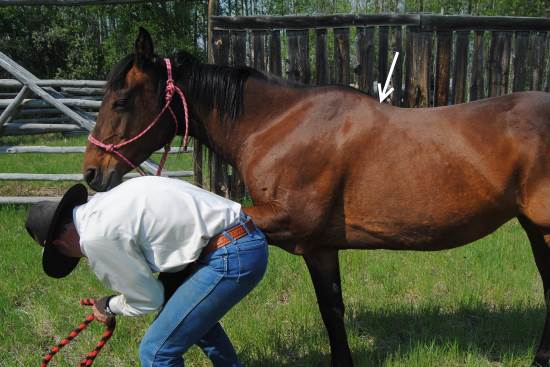
If you read anything about saddle fit and the shoulders, you will learn that the top of the shoulder blade rotates backwards when the horse extends their leg forward. This is often demonstrated by lifting and pulling the leg forward to show you how far the shoulder blade can rotate back. You are then told you have to put your saddle behind that farthest most point or you will interfere with the movement of the shoulder blade. Sounds good in theory. Not necessary in practice. Why? The first issue is that the shoulder blade doesn't go that far when the horse moves it (and we talked about that here). The second and more important point is that it doesn’t matter anyway. Really and truly, honest! Let me explain… (You'll have seen this fact in a previous post if you were watching carefully.)
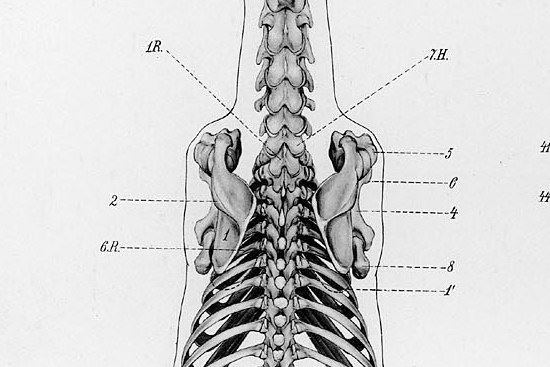
Remember that anatomically, there is no bony connection between the foreleg of the horse and the horse’s body, so the scapula doesn’t rotate around a fixed point, as the hip joint does. Nor is it held a certain distance away from the rib cage and spine as the front limb on an animal or bird which has a functional collar bone does. It moves against the rib cage and it moves around under the skin. This makes it very difficult to research and, to my knowledge, there are no scientific studies that show how it actually moves in real life relative to the body. (If anyone knows of some, please let me in on them! I’d love to read them.)
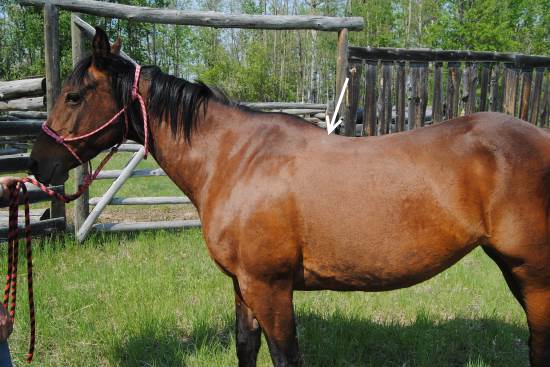
So why are we so confident in what we are saying about shoulder blades and the western saddle? The following pictures will show you why. Wilma, unfortunately for her at some point in her past but fortunately for us now, has a small white spot due to damage acquired before we owned her. I’m pointing it out (white arrow) in this picture which was taken with her just standing there. She’s not square, admittedly, but horses don’t stand square for most of their lives anyway, so this is just being real. (That’s my story and I’m sticking to it.) Compare the position between that spot and her shoulder blade when she is just standing to when her leg is pulled forward in the first picture. (And you thought I was pointing to the back of the shoulder blade in that picture, didn’t you?) There is distance now. The spot was right above the back of the shoulder blade before.
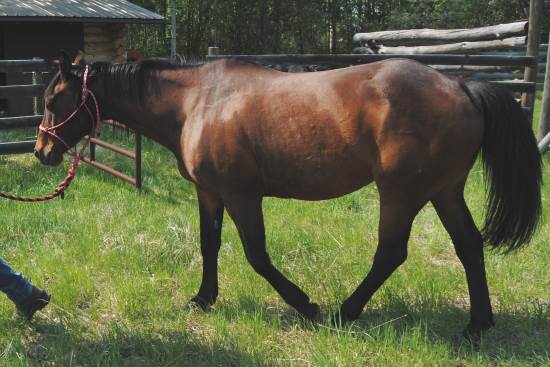
To start with, here’s some “backyard science” before we get to the high tech stuff. I put the camera on continuous mode and Rod walked Wilma in a circle around me. Pretty basic stuff. I’m using the pictures from this direction because the shadows show more clearly the shoulder blade movement relative to the body, but the same pattern was consistent for multiple strides (and for more than one horse too). Here she is just after lift off of her left front foot. Going back to our post on seeing the position of the shoulder blade, you can make out where it is, but it’s pretty tough. That back edge of the shoulder blade is very smooth with the horse. (Picture 1)
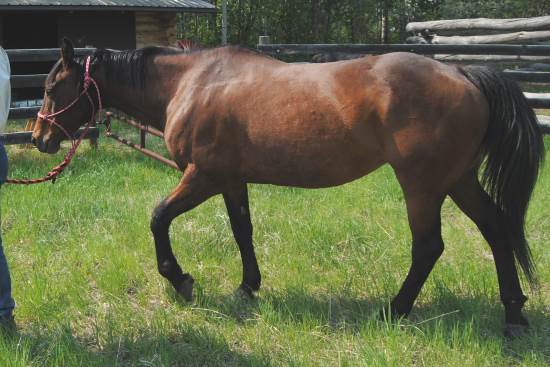
She’s starting to reach now. You can see the front of the shoulder blade, but where’s the back? It blends in with the body. (Because we did this with a camera and these aren’t taken from a video, I don’t have full extension on this stride, but there is a picture of it later. Don’t worry, you’ll see it!!) (Picture 2)
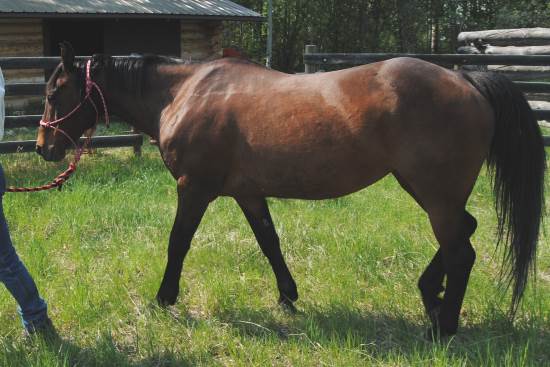
Next picture she is touching down. The front of the shoulder blade is more prominent and you can see the top as it is pushed upwards because that leg is now bearing weight. The back of the shoulder blade is still smooth with the body though. (Picture 3)
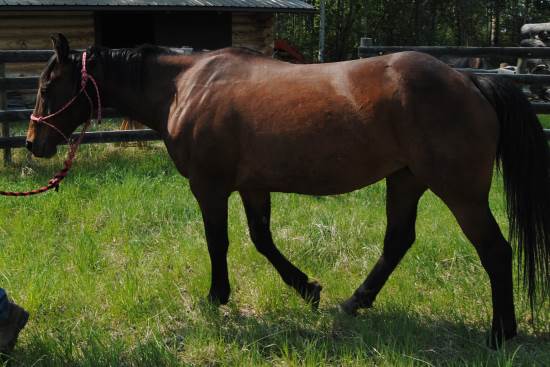
Almost mid stance – the leg is straight up and down. Front and top sticking out from the body, and the back corner is now seen. (Picture 4)
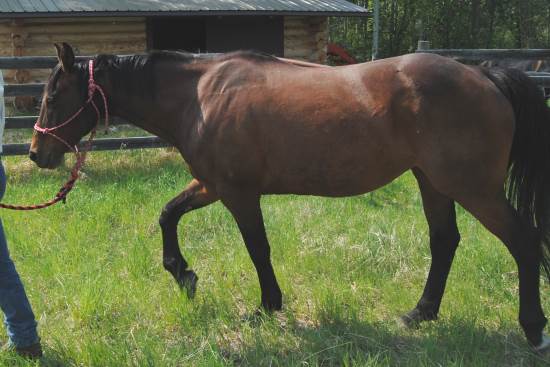
Past mid stance, and that back corner is showing up more and more. Notice how far ahead of the white spot it is. (Picture 5)
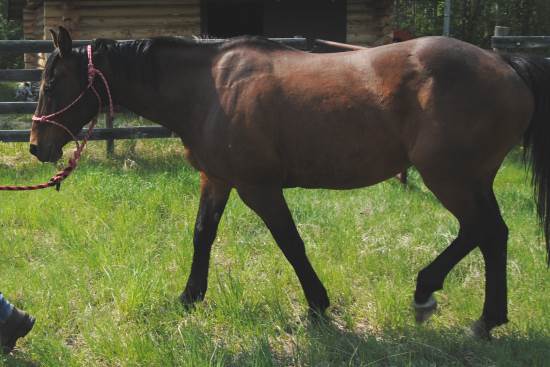
Just before lift off and the shoulder blade is now rotated as far upright as it will go - exactly when you expect there won’t be any problem with the saddle, right? But look at how far it sticks out from the body, and see the exaggerated dip behind the shoulder that isn’t there when she is just standing but which forms due to the movement of the leg. (Picture 6)
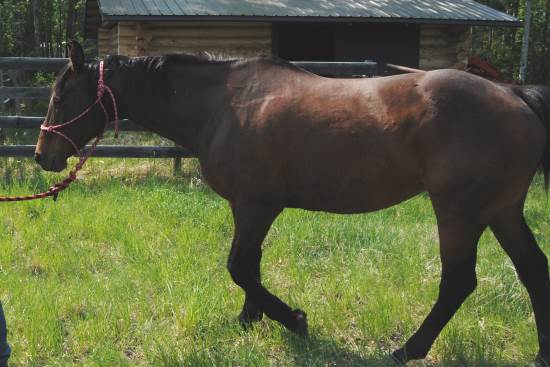
Lift off, and the shoulder blade disappears again. The active muscles are the ones which move the leg forward and without weight on the leg, the shoulder blade nestles back close to the rib cage again. (Picture 7)
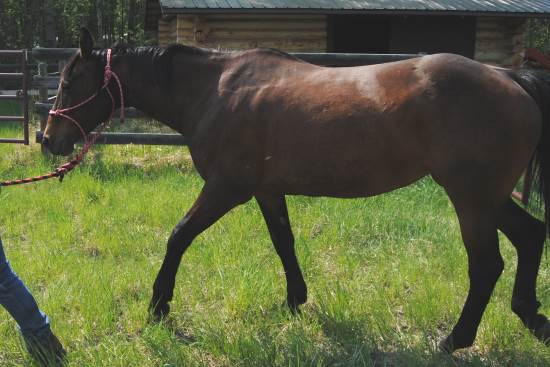
And here’s your extension picture. You are starting to see the front of the shoulder blade again, but the back of it is smooth, smooth, smooth with the body. (Picture 8)
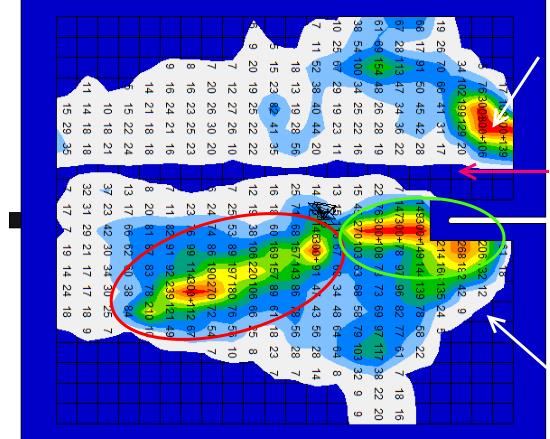
So… how does this work out under saddle? Here’s some pictures with our pressure mat so you can see shoulder movement under a saddle that is positioned too far ahead. Explanations first off - there are a number of issues not related to saddle fit, saddle position and shoulder movement occurring in these images. We were having issues with the mat (which is now being repaired). We’re missing a whole line of sensors (red arrow). There is a fold in the pad (circled in red) which happens not uncommonly because we have a flat pad and a horse’s back is curved. That fold extends up the right side of the withers and shows up at certain phases of the stride (circled in green). So this series illustrates a lot of the problems that occur with the current technology, or at least the current technology which we have. It isn’t as easy or clear as we had originally hoped to mathematically interpret the information that comes from these scans, but we can still learn a lot with it. For the purpose of these pictures, we're concentrating on the pressure on the shoulder blades seen at the front of the mat (white arrows). That’s the topic we are discussing here.
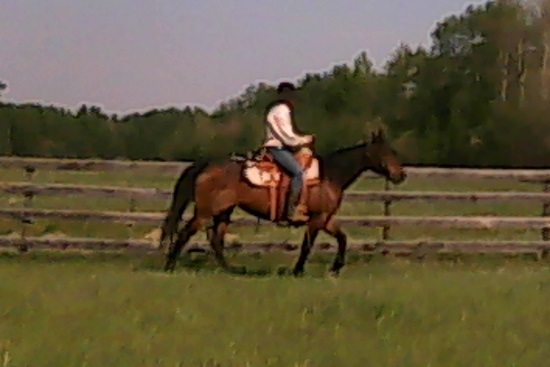
Again, the images from our pressure sensor system come out pretty small, but here’s what you can see of saddle position relative to horse. (I discussed how to see that in a recent post.) It is not horribly far ahead. Some people would even say it was fine, but it is, indeed, over the shoulder blades and you can see on the scans what it must feel like to the horse.
I’m putting the pictures into a chart form with the scans tuned to be facing the same direction as the horse - front to the right, back to the left, left side of the horse on top and right side of the horse on the bottom. Compare the timing of the pressure under the right front bar tip with what you’ve seen in the pictures of how the shoulder blade juts out from the body when weighted and disappears from view as it melds smoothly with the body when not weighted. When is there pressure, and when isn’t there pressure under the front bar tip? The picture series above isn't timed exactly with the scan series, but you’ll get the idea. The comments under the pictures apply to the right front leg, but you can see the same thing happening under the left front bar tip if you compare phases of the stride. Remember, this happens when the saddle is on the shoulder blades.
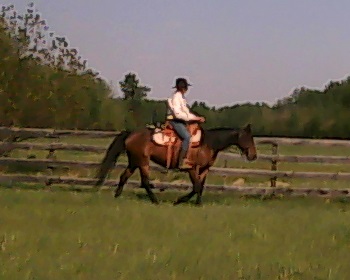 |
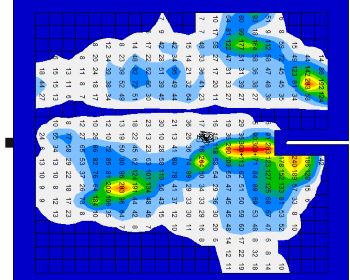 |
| Lift off - matches picture 1 above | No pressure on the right shoulder when the leg is off the ground. |
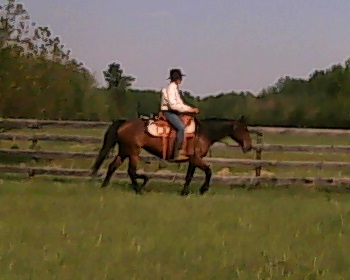 |
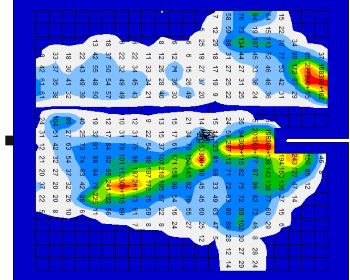 |
| Reaching - matches picture 2 above | Still no pressure on the right shoulder. |
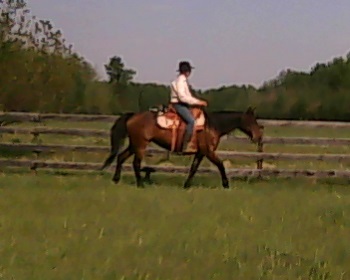 |
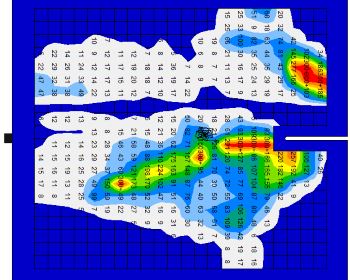 |
| Extension - matches picture 8 above | This is said to be the critical point for saddle fit. In truth, there is no pressure over the shoulder at this phase of the stride. |
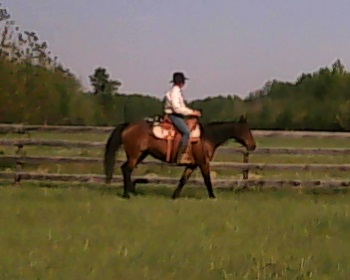 |
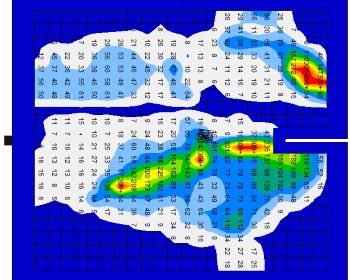 |
| Touch down - matches picture 3 above | Carrying some weight, but no pressure showing up yet. Compare to picture 3 above. The back of the shoulder blade is still blending smoothly into the body. |
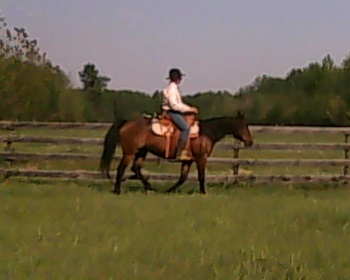 |
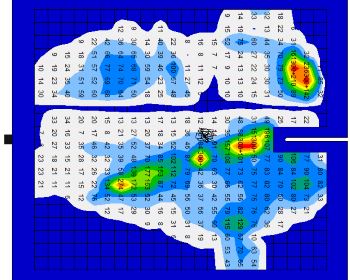 |
| Almost mid-stance - matches picture 4 above | Starting to get a bit of pressure as the back of the shoulder blade is starting to come out from the body wall. |
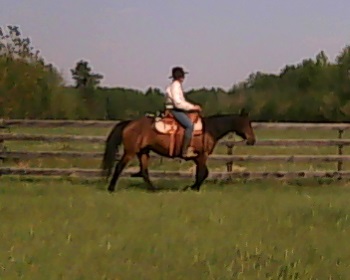 |
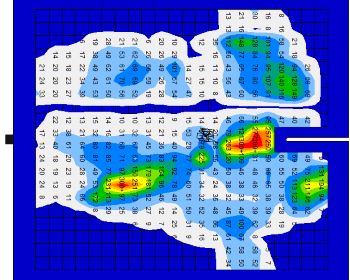 |
| Mid-stance - between pictures 4 and 5 above | Shoulder is much more delineated relative to the body, and you can see the pressure building under the front of the bar. |
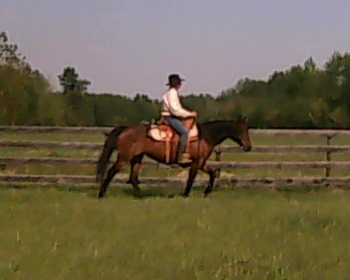 |
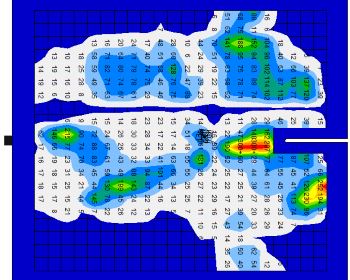 |
| Past mid-stance - matches picture 5 above | The shoulder bulges more. The pressure builds... |
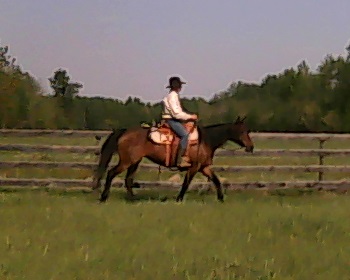 |
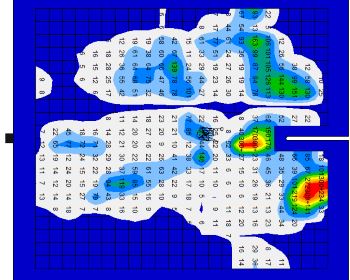 |
| Further past mid-stance - between pictures 5 and 6 | Increased shoulder bulging. Increased pressure... |
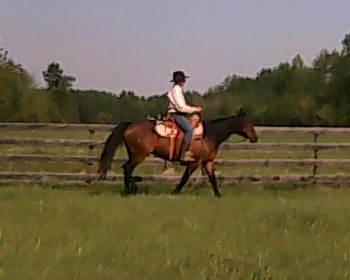 |
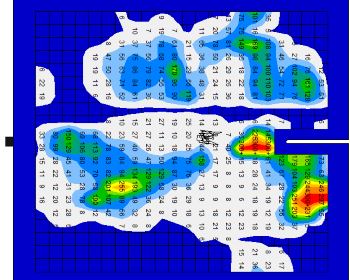 |
| Just before lift off - matches picture 6 above | Contrary to what you would think, while the shoulder blade is most upright, it has really high pressure on it because it is bulging out from the body to its fullest extent at this phase of the stride. |
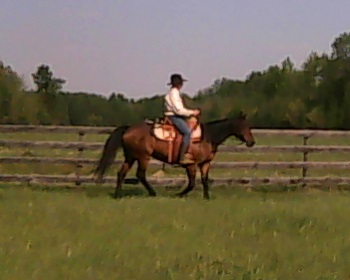 |
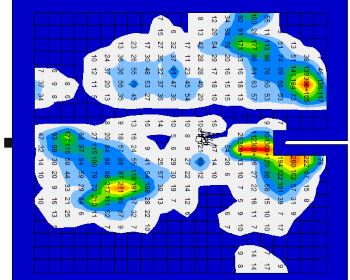 |
| Lift off - matches picture 7 above | The weight is off the leg. All pressure is off between the shoulder blade and the bar. |
Conclusion, the common idea that pressure on the back of the shoulder blades comes when the shoulder rotates back, and therefore this is your prime consideration regarding saddle fit, is a totally erroneous teaching. That isn’t when the pressure comes. Instead, the muscle at the back of the shoulder blade is compressed between bar and bone when the horse has weight on the leg, causing the shoulder blade to jut out from the body to varying degrees. This is why it is necessary for the front bar tip to be just behind the shoulder blade – not on or above it. It is also why the front bar tip can be right behind the shoulder blade – not 2” back, as is often stated. (Note: This applies to western saddles. Whether or not it applies to English saddles with their different construction, we have never tested to know so we can't say.)
Seeing the evidence makes us rethink a lot, doesn’t it? I was going to call this post “Saddle fit and shoulder movement – why (almost) everything you read is wrong” but I wanted people to read the post to consider what I said and not discount it right away, so I changed the title. I found this TED talk the other day. It made me think. There is so much that we as human beings don’t know, and we need to be willing to admit that we might just be wrong before we can discover and learn more. And there is always more to learn...
To see pressure mat data from a saddle both on and then behind the shoulder blade, check out this post!
And to see this information in video form, check out our video on the Proper Position of a Western Saddle.
